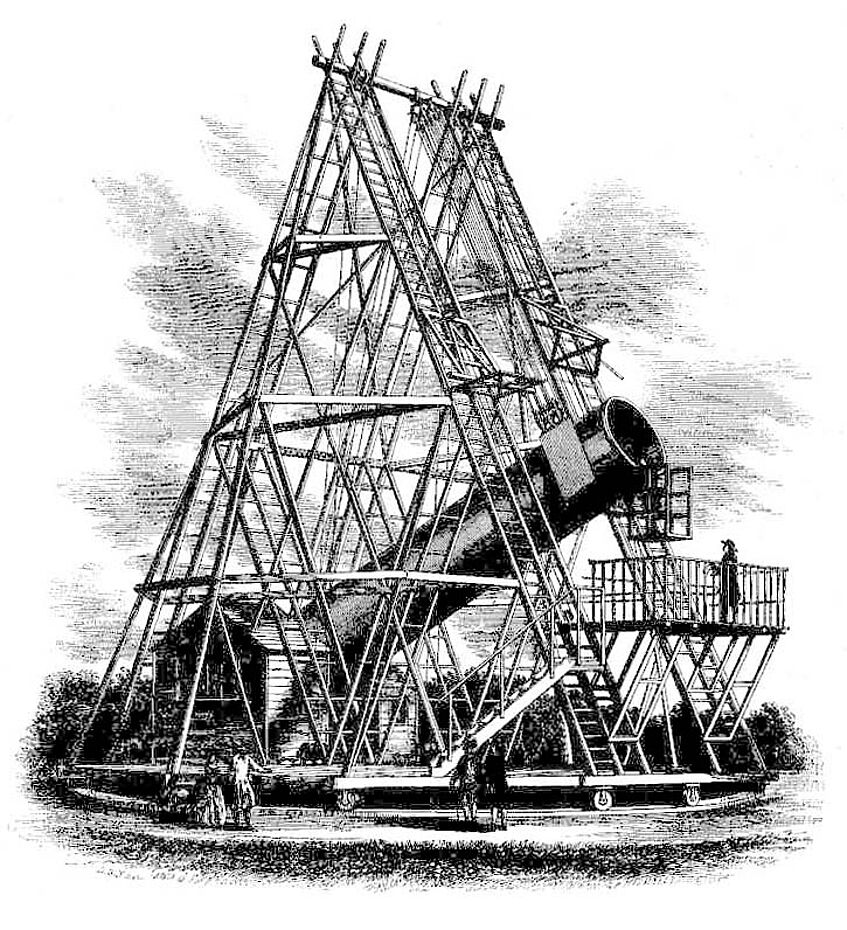History
Scientific Legacy

Scientific Legacy
The discoveries of the Herschel siblings were not only restricted to stars, planets, moons, comets, and nebulae, but the discovery of the infrared radiation is also one of their main achievements. Additionally, the Herschel siblings are well known for their construction of telescopes unique in size and precision at their time.
Many discoveries of the Herschel siblings have only been possible because of their systematic surveys of the complete northern sky. They catalogued countless stars, double stars, and nebulae, and registered them in well arranged catalogues or added their discoveries to previously published catalogues from other astronomers. The discovery of Uranus and many comets were only possible because of the detailed notes and multiple observations, done by the Herschels. As soon as the Herschels discovered a new object in an area of the sky they already had covered, it had to be a moving object. William Herschel was also one of the first astronomers to think about the stellar lifecycle, and who tried to measure the extent of our milky way and the position of our solar system within it. With all this, the Herschels laid the groundwork for modern survey astronomy. Additionally, their construction of gigantic reflecting telescopes influenced the technological evolution of more and more precise telescopes in astronomy.
With the discovery of the infrared radiation, the Herschels opened the door to the invisible parts of the electromagnetic spectrum, which was completely unknown back then, but is an essential part of todays scientific work and everyday life. The theoretical background for this, as well as modern detectors, which can make the invisible radiation visible, were not accessible to the Herschels during their lifetime. Nevertheless, their pioneer work can be regarded as one of the most important cornerstones of modern research.
From a scientific point of view, the discovery of infrared radiation has contributed significantly to our understanding of the universe by enabling infrared astronomy to observe cool dust clouds in space. These clouds of dust not only traverse our Milky Way galaxy (see picture below) but also distant galaxies, and in the dense clouds of dust new stars and star clusters as well as planetary systems can form and emerge. At the end of stellar life, when stars finally dissolve into their basic constituents and release dusty and gaseous material to the surrounding universe, dust clouds are formed, which radiate in the infrared. The hitherto most important infrared telescope was named after Wilhelm Herschel, and was used under the name Herschel Space Observatory from 2009 to 2013 in space with a mirror of 3.5 meters in diameter.

The dusty galactic plane of our Milky Way as viewed by the Herschel Space Telescope in infrared radiation.
Copyright: ESA/PACS & SPIRE Consortium, S. Molinari, Hi-GAL Project
